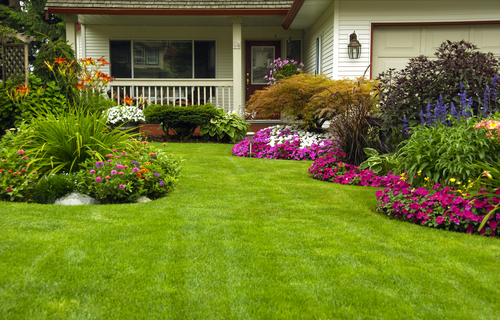Posts Tagged landscaping
Revamp Your Outdoor Space With Help From The Expert Rohnert Park Landscapers
“The Garden Is A Love Song, A Duet Between A Human Being And Mother Nature .”
-Jeff Cox

Maybe you’ve just purchased a beautiful home in Rohnert Park but the outdoor space could do with a bit of perspective; Or maybe you already reside in Rohnert Park and feel like your backyard has become nothing more than a wasted space, in desperate need of a makeover.
Well, it doesn’t have to be this way, as an expert Rohnert Park landscaper can be at your door with just a call or click. Look us up at DK Landscaping Inc. as we provide the best landscaping maintenance services that Rohnert Park has to offer; We’d be delighted to come in and give you a hand with any landscaping projects that you may have in mind; We can turn the most unattractive surroundings into an area you can enjoy.
Instantly Transform Your Property – Get Started With Your Own Personal Rohnert Park Landscaper
Planning Your Project
A landscape design is like a floor plan for an outdoor area. Basically, it serves to create a visual representation of a site using scaled dimensions. These plans also include natural elements like flowers, trees, and grass as well as man-made elements such as lawn furniture, fountains, lighting, and sheds. Sounds like a lot huh?
Well, truthfully, this isn’t something you want to skip out on, as this actually saves you time, and money while helping you to determine exactly what your project will need in terms of materials, tools, and costs.
Naturally, most people, will need professional help to plan a landscape the right way; So why not work with the best? The Rohnert Park landscaper experts here at DK Landscaping offer expert advice on landscape design plans or can even help you, by drafting a plan that works for your surroundings and the appeal you wish to exude.
Preparing The Area
Grading the site is usually the first item to be addressed when preparing an area for the restoration or creation of a landscape. Essentially, this is to ensure a level base, that basically acts as a foundation for landscape projects. At this point, our landscaper will also have to perform an evaluation of the drainage, soil conditions and elevations for walls or steps as these are also important elements that need to be considered when creating a landscape.
We make this part easy – Our experienced team of Rohnert Park landscapers here at DK Landscaping Inc. can guarantee A-Class, landscape grading services for the best results with your landscape and also make sure that sites are completely clear of rocks, weeds and debris before proceeding with projects;
As we like to say here at DK Landscaping “ We like weeds, we like jungles”, so there’s no environment we can’t handle. We’ll bring all the necessary tools to get the job done. This brings us to our next step, soil conditioning.
Basically a big word for a product that’s added to the soil to improve its physical qualities. It is made from ‘press mud’, which is a residue of sugarcane filtration and is mainly used to improve poor soils or to rebuild soils which have been damaged by improper soil management. However, in most situations the soil conditioner minimizes the amount of imported topsoil needed for a project, resulting in overall savings for clients.
Once these important aspects are covered then you’re on your way to creating the perfect landscape; And remember, you can get all the expert help you need from our seasoned Rohnert Park landscapers here at DK Landscaping Inc.; We’re just a call away.
Check Out These Popular Landscape Designs For Modern Homes And How Our Rohnert Park Landscapers Can Make It Happen
You don’t want to overdo, but you still want your landscape to be intriguing and have variety; And to be honest, one of the most difficult aspects of landscaping your yard is finding the right ideas. This is simple – you just need the right landscape design to suit your needs. Here is a list of different landscape design ideas for backyards that you may find interesting, to help you to transition your landscape this spring.
A Backyard Design For Entertaining
This particular design is the perfect set-up for summertime activities so if you enjoy relaxing outdoors in the summer this design is ideal for you. Here are the features it includes:
- A large gate to bring in tables, chairs, tents and more
- Hardscaped surfaces to place tables and chairs
- A fire pit and other sources of landscape lighting and heat for fun after dark
- An area to facilitate a grill or an outdoor kitchen to prepare food outdoors
A Low-Maintenance Landscape Design
Mostly used to create enjoyable, serene, outdoor settings without having to perform much maintenance, this design has features that include:
- Xeriscaped and hardscaped areas that don’t require pruning, mowing or watering
- Covered seating area to keep outdoor furniture in good shape.
- Native plants, trees, and grass
A Landscape Design For A Family
With this design every family member can have their own special place to enjoy in the backyard with features like:
- Safe play area for the kids
- Hammock for teens to enjoy a good book on a lovely afternoon
- Seating area for adults to soak up the outdoors and keep an eye on the kids
- Fenced in yard for privacy and safety
With the right tools, our hardworking professionals here at DK Landscaping can make redefining your landscape, a straightforward process that only calls for a basic idea of what you are looking to achieve. Additionally, we can also help you to choose plants, materials and more to ensure your backyard meets your specific needs.
To work with our professionals here at DK Landscaping Inc. please contact us at: (707) 280-3632 or you can visit our website at dklandscaping.com for more information.
Useful Gardening Tips That Promote Healthy Landscapes
As a gardener or landscaper maintaining beautiful surroundings and healthy plants is certainly an important priority and even though this may sometimes be challenging it is necessary if landscapes are to remain healthy and attractive. You want your friends and family to have fun in a garden that is full of life and energy and good maintenance is the key. There are several useful tips that gardeners can apply in effort to promote healthy landscapes and gardens.
Excellent Soil Quality is Vital in Maintaining Healthy Landscapes

Good soil quality is extremely important if plants and trees are to grow healthy and to their full potential. If you discover that your plants, trees or flowers are not thriving this may be due to poor soil quality however one approach that has proven to improve and maintain the quality of soil is the use of fertilizer.
Fertilizer can come in several forms and is an excellent way to enrich soil and promote plant growth. One of the most common forms of fertilizer used throughout gardens and landscapes is organic fertilizer.
Essentially organic fertilizer consist of naturally bio-degradable materials mainly in the form of animal manure but can also be other natural ingredients. It is great for gardens and crops as it not only restores soil quality but improves the long term health of soil promoting healthy landscapes overall..
Mulching Promotes Healthy Landscapes and Gardens
In looking for great ways to promote healthy landscapes and gardens another very useful tip gardeners can utilize is the application of mulch to garden beds and other landscape areas. Generally mulch is used to eliminate weeds, protect and stabilize plants and trees as well as to help soil retain moisture.
Mainly consisting of several, different, materials including chopped leaves, straw, grass clippings, wood chips,sawdust, shredded bark, gravel or stone mulch can be used in vegetable gardens, flower beds, plant pots, around trees, walkway areas, hedges and more.
Among many common gardening techniques the use of mulch has been found to be an easy, environmentally friendly way to promote healthy landscapes and gardens.
Proficient Irrigation Systems Help Promote Healthy Landscapes
In order for gardens or landscapes to remain lush and healthy having an adequate water supply is very important. So a great way to ensure that plants are properly supplied with water is by installing an irrigation system that provides a precise and timely supply of water to landscapes and gardens.
An irrigation system basically obtains water from a source and distributes it equally and uniformly to specific areas throughout gardens. Different kinds of irrigation used include high or micro flow irrigation, in-ground irrigation and automatic irrigation systems.
Over time irrigation methods have improved to better manage different types of gardening done so depending on what type of gardening you do installing the appropriate irrigation system is the best way to ensure gardens and landscapes receive the water they require.
Need Help With Your Landscaping?
Here at Dk Landscaping Inc. we aim to provide the highest quality landscaping and gardening services to clients. Our dedicated team works with clients to manage any type of gardening or landscape services you may need. Whether it be mulching, pruning, irrigation or even planting with affordable rates and great service we’d be happy to come in and assist. Contact us for more information.
How Mulch Can Be Applied To Your Garden v2
To keep gardens healthy and vibrant gardeners utilize mulching and it is one of the easiest and more commonly used methods in most gardens. Mulch is mostly available in two forms organic and inorganic and is mainly used to eliminate weed growth, lend additional support to plants and to help plants retain moisture. Mulch can be purchased from any gardening supply store or can even be formulated by gardeners themselves by recycling other products or materials.
Try Mulching!
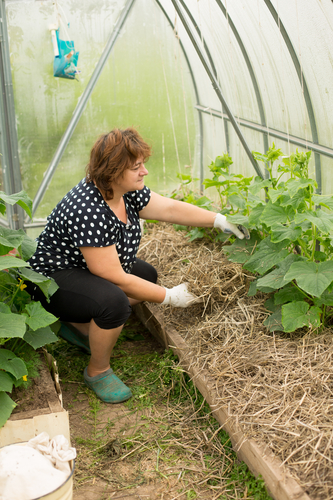
If you mow your lawn the clippings of grass that remain can be converted to mulch. Grass clippings have a high nitrogen content and can be used to naturally fertilize plants but works exceptionally well to fertilize vegetables.
For gardeners who have enough compost this too can be used as mulch. Once it isn’t dried out compost is great for enriching soil but to ensure that it provides the necessary nutrients and remains biologically active another layer of mulch such as chopped leaves should be added to cover the compost.
There are so many different things found in and around gardens that can be used to mulch. Having said using straw or hay throughout gardens is another excellent mulching option. It has most of the benefits of other mulches while adding organic matter to soil as it decomposes.
Gardeners should keep in mind when using hay or straw to make sure it is weed and seed free when making applications. They should also ensure that it is not placed too close to stems to prevent attracting slugs and rodents.
Did you know that mulching a vegetable garden with sheets of black plastic film can do wonders? This is another neat, gardening and mulching alternative that has proven to be very effective where the black plastic transmits the sun’s heat to the soil beneath, creating a microclimate that is about three degrees warmer than a garden that does not have mulch applied.
Since the plastic film remains warm and dry fruits and vegetables are protected, they don’t rot and they are kept clean. As with other mulches it prevents weed growth and retains moisture however when using plastic gardeners should remember to punch holes so that soil can still receive air and that plants and seeds can be transplanted or sown.
As we may know some mulches come in inorganic forms as well. Gravel, stones, and geotextiles can all be used to mulch gardens. Even though some are of a hard or rough texture and do not filter nutrients into soil they still allow air and water through to the soil beneath while keeping weeds from coming up.
These are all great ways to recycle materials or products in and around gardens or homes as well as to help gardeners to save money. Mulching is great for plants and vegetables and promotes a healthy environment throughout gardens so if you haven’t already maybe it’s time you start as you don’t even have to buy it you can make it and apply it yourself. Contact us for more information.
Ideas On How To Save Water For Gardening
Gardening is a recreational activity for many Californians. Creating and maintaining a lovely garden is the dream of every gardener. With seasonal plants, exotic varieties and breathtaking blooms nurturing and maintaining a garden can sometimes be pretty challenging task.
There are several activities and responsibilities that need to be considered and employed in order for a garden to be properly maintained and nurtured. One of these main responsibilities would most definitely include the provision of water to trees, plants and flowers.
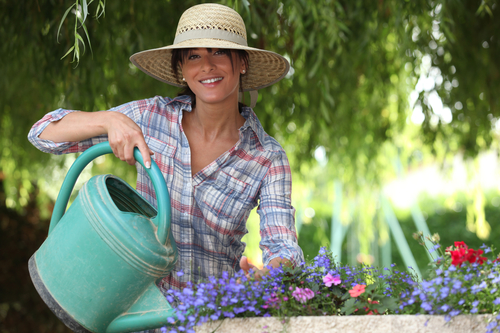
Successful Gardening
When it comes to supplying a garden with water most people have the perception that all is well so long as plants and flowers get watered however this may not exactly be true as there are many factors that can affect the way trees, plants and flowers receive water.
Since this is the case trees, plants and flowers can be affected in such a way that they don’t obtain sufficient nourishment to grow or bloom as they should. Even though this may be so giving trees, plants or flowers an excessive supply of water can be harmful to them and costly for you.
So in order to eliminate most of the issues that are encountered in gardens as it relates to watering plants incorrectly here are a few insightful tips that gardeners could utilize to reduce costs and water usage in gardens.
One very resourceful way to reduce the amount of water used in gardens is to attend and maintain soil. Adding mulch and organic matter to soil are both excellent ways to reduce the excessive use of water in gardens. They both help to improve water retention and soil structure so that plants don’t constantly need to be watered.
Disproportionately watering gardens tends to not only be a wasteful practice but also causes gardeners to do more work than is actually necessary. So to rectify this issue simply check to see if plants, trees or flowers do or do not require water.
To do this gardeners should take a spade and push it deep into the soil if it’s damp things are ok but if it’s dry then it’s definitely time to water. It is important to remember if you have clay soil it might feel damp whether it’s irrigated or not and sandy soil can feel dry even if it contains water. So in these cases gardeners should watch plants for when they start to show signs of water stress.
Knowing the best time to water plants is extremely important and by utilizing certain tools and techniques such as automated irrigation, sprinkler systems, watering cans or hoses water can not only be adequately supplied to plants at the required time but their use can minimize the amount of time spent and the amount of water used watering gardens.
In addition another way to supply water to plants and reduce usage would be to collect rain water. Place an empty receptacle at the end of drains to collect rain water whenever there is a shower of rain.
With this method people could reduce the usage of water in their gardens by 50% helping them to save money and at the same time still being able to care for their gardens.
These helpful tips can easily help gardeners to save time and money but most importantly it can help them to save a very, precious resource. Contact us for more information.
Preserve The Ecosystem With Gorgeous Landscape Designs
Over time scientists, environmentalists and activists have all pleaded with persons around the globe to take responsible measures when it comes to the safety and preservation of our environment. You can create landscape designs that enhance your surroundings and that are environmentally friendly as well.
Ecofriendly Landscape Designs
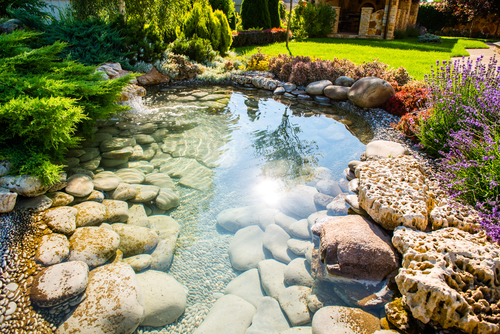
In order to achieve this persons around the world must take action by positively inspiring others to take care of their surroundings along with improving environmental aspects of society, nature and its resources. If these positive actions are consistently promoted and executed even to the tiniest degree they result in a major impact on the environment.
Having a wholesome and positive impact on the environment can be achieved in many ways some of which include recycling and reusing products and properly disposing of garbage and hazardous waste.
Another dynamic and eco-friendly solution would be for persons to preserve ecosystems by using impressive landscape designs. The birds, butterflies, squirrels and many other small creatures all call our gardens or outside surroundings their homes.
These delightful creatures astonish, entertain and offer us a tranquil ambience in and around our homes and surroundings. The individual role of each creature also plays a vital role to the environment and our ecosystem so it is very important that we help to attract and preserve all the elements that influence and affect their habitats.
One suggestion that has proven to be very effective as it relates to preserving the ecosystem would be to grow plants that attract wildlife. By planting the right flowers, trees, shrubs and vines in our gardens and backyards we will be helping to nurture and protect the ecosystems that exists all around our homes and communities.
Using plants and trees that occur naturally in the area you live provides an excellent source of food for birds, insects and other wildlife. Nectar, seeds and tasty fruits are all on the menu however pollen and nectar are among the most common food sources for insects and small birds so by utilizing pollen rich plants like wildflowers and other old fashioned varieties along with annuals and perennials we offer food, nectar and pollen to birds and insects throughout the growing season.
It may not seem like it but by planting a variety of trees and plants we also offer much needed shelter and protection to wildlife to rear their young and hide from predators. Utilizing tips like letting a part of your lawn grown wild to offer sanctuary to ground nesting bees or allowing a dead, hollowed, tree to stand to create nooks for birds and butterflies.
Bird baths, nesting boxes and small ponds all help to promote and increase the wildlife population around us which results in thriving ecosystems. Having readily access to water is very crucial to wildlife survival so again by installing a water gardens or a catch basins for rain can certainly help to provide a constant stream of water for wildlife in our surroundings.
In order to make this a reality as well as to get and stay on a path that encourages the preservation of the environment and it’s many ecosystems the goal would be for each individual to take responsibility and perform positive acts daily that ultimately improve, enhance and protect the environment as a whole. Contact us for more information.
Spring Landscaping Ideas For The Perfect Garden
Landscaping during spring can give you a luxurious and glamorous looking garden. Spring is classified as one of four temporal seasons experienced here on our planet which occurs just after the winter and just before the summer. When most people refer to spring or ‘springtime’, to them it becomes synonymous with ideas of rebirth, rejuvenation, renewal, resurrection and regrowth.
Nevertheless due to the cold conditions brought on by the winter season it is highly likely that most plants, trees and shrubs will suffer substantial damage during the early part of the year. If you have a garden in and around your surrounding property protecting your plants from any damage or destruction should always be a major concern.
Landscaping Your Property During Spring
Since the springtime is seen as a time of rebirth and regrowth there are some additional tips that gardeners can employ to ensure that they maintain a safe and nurturing environment throughout their gardens.
Due to the harsh, cold, conditions of winter debris inevitably accumulates in grass and on lawns. Since lawns require no more than ½ an inch of buildup gardeners should rake away any excess debris from their grass or lawns. This also helps to control thatch on the lawn and offers an opportunity to look for matted areas. Raking will also allow the lawn a chance to breathe again.
Over time lawns can become compacted especially with a lot of traffic or excess debris so to help with this it is highly recommended that gardeners aerate lawns in order to avoid this. If you are not sure how to aerate your lawn you can always contact a professional landscaping service to come and assist with this.
Apart from some lawns having excess debris some can be found to have a lot of patches and bare areas. Overseeding is one method gardeners can utilize and refers to the applications of seeds to fill bare or patchy spaces in lawns . Although this alternative is generally recommended for the fall season it can be done in the spring if absolutely necessary.
If you have a sprinkler system the springtime would be the ideal time to inspect it for any damages and if any to perform repairs. However if all is well and no issues are detected this would also be the perfect time to have your system reactivated.
The spring is also a good time to apply some pre-emergent weed control to plants. This serves significantly control weeds in gardens as well as to act as a barrier against future weed seedlings. Gardeners should always keep in mind that this should be done before applying any organic fertilizers and to ensure effective weed control applications should be done on a continued basis in and through the summer.
Mulching is another effective system that gardeners ought to practice during spring as it offers several benefits to existing or emerging flowers, plants and trees in gardens. Placing mulch in flowerbeds and around plants and trees helps them retain moisture during the early spring months. It also helps to reduce the temperature of plant roots and insulates them in event of an unexpected freeze during the spring.
It is only natural that all gardeners, landscapers and farmers alike all want their gardens or crops to thrive and be protected so by utilizing a network of useful informative and effective tips available online or by hiring professional services those goals can ultimately be achieved. Contact us for more information.
Different Kinds of Irrigation Systems
If you are a farmer, gardener or even a landscaper you probably know how important it is to have an irrigation system installed to supply your plants, gardens or crops with water. Most irrigation systems are used during dry seasons when rainfall is scarce but since there are several types of irrigation it would be important for persons to identify which type would best serve their needs.
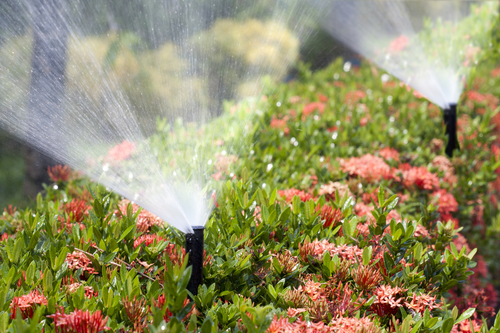
Lets Look At irrigation Systems
Irrigation techniques may differ in several ways but the basic concept of the system is that water is obtained from a source and is distributed to plants or crops. Generally the aim of the system is to equally and uniformly distribute specific amounts of water to each plant or crop.
Types of irrigation used include high or micro flow irrigation, sub-irrigation, in-ground irrigation, localized irrigation and even automatic irrigation systems. They are all utilized to best suit their specific purpose however the two, most, commonly, used systems are the high flow or micro flow irrigation systems.
With these two main types of irrigation systems one releases water with a high flow and the other distributes water with a low flow or a drip. The high flowing system operates so that water spreads heavily across the surface of the specified area, in order to wet and infiltrate into the soil and the low flowing system functions so that water falls in a dripping fashion and is delivered directly at the position of roots.
The high flowing system is mostly used when irrigating agricultural land. Here water levels that originate from the irrigation source and are used to flood or control the level of water in each distinct field. The flooding system is controlled by dikes which are slopes that help to regulate water levels. This form of irrigation is mostly seen with the cultivation of rice.
The low flowing or drip irrigation system as we know obtains water from a source and transports and delivers it to plants through emitters, mini rotors, micro sprays or drip lines in a dripping fashion where water goes directly to roots.This method has been seen as the most, water-efficient, method, of irrigation as it utilizes less water and once managed properly minimizes evaporation and runoff.
Since drip irrigation systems are the more domestic and commonly used system here are a few tips that can assist persons with operating and maintaining them so that they function as efficiently as possible.
For this type drip lines are most recommended and should be used for continuous rooting as they have flexible tubing containing tiny, water, flow, regulators, for evenly spaced water distribution.
Micro sprays and mini rotors clog easily, and should be regularly maintained. Monthly investigations should be conducted and if necessary repairs or replacements done to ensure there are no irregularities within the system.
Laying out emitters individually can also prove to be an efficient practice as this delivers water exactly where the plant needs. It reduces the amount of weeds produced and eliminates excess, irrelevant water. Persons also need to make sure that their drip system includes pressure reducers and filters as these ensure water is measured accurately and delivered at the specified rate.
Remember that these systems must be designed to prevent runoff, low head drainage and overspray. For more information on irrigation contact us.
6 Xeriscape Ideas
Xeriscape gardens are specially built to require little to no irrigation. Instead, they’re specially constructed to use minimal water, and conserve the natural water (like rainwater) that enters their system. The end result is an environmentally-friendly garden that’s still beautiful.
Because xeriscape involves such skill and knowledge, it can be tricky to know where to get started. But with these six xeriscape ideas, you’ll get a head start on planning your garden.
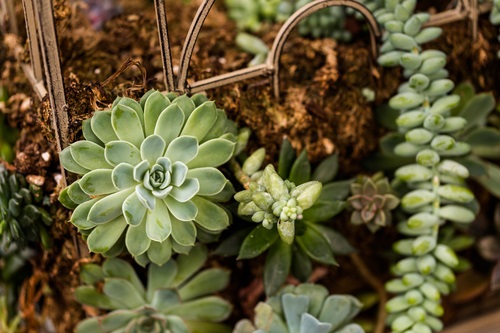
1. Think Beyond Cactus
Many people think xeriscape gardens are restricted to cactus and succulents. But most local plants are resistant to dry conditions in your area. Research native plants, or inquire with local gardening organizations, to find out what plants would flourish in your xeriscape garden.
2. Use Drip Irrigation
While many xeriscape gardens use no irrigation whatsoever, some use a form of irrigation called drip irrigation. Put small holes in a garden hose (or buy a hose specially perforated for this purpose), then lay it flat against the ground or near to it. Run this hose in the early morning or late evening, to minimize water loss due to heat.
The vast majority of the water through this slow drip system will get soaked up through the earth where it can nurture your plants, rather than getting lost to spray or evaporation. This is a good way to keep even drought-resistant plants through dangerous droughts, or to encourage your blooms to look their fullest during a dry season. To further maximize this method’s potential, place any plants that need more water close together, so they’re easier to water.
3. Try Perennials
Perennial flowers are more likely to be drought-resistant than annuals, and they’re lower maintenance, too. Try planting a group of perennial blooms close together to maximize their visual impact. For additional beauty, choose several perennials that will bloom at different times of year and plant them throughout your garden, to make sure you’ll always have something blooming.
4. Plan for Fall and Winter
Plants like Russian sage and many ornamental grasses dry out in the colder months. This is actually a positive: a well-planted standing will look like a dried bouquet. Add these to your xeriscape garden so there’s always something to draw the eye, no matter the season. You may even choose to avoid cutting back plants in colder months, to better take advantage of dried plants’ unusual shapes and appearances.
5. Fill Space with Rocks
Many xeriscape gardens gravitate toward gravel for open spaces. Gravel is great because it isn’t water-hungry like grass, and it holds moisture better than soil. But adding some beautiful rocks to cover space is a way to add texture and color to an area. Even just a small portion of rock garden adds character and variety to your xeriscape garden.
6. Play with Style
Not every xeriscape garden needs to look like a desert. With a little creativity and planning, xeriscape adapts well to any aesthetic or garden style. Don’t be afraid to think outside the box.
Xeriscape isn’t just environmentally friendly: it encourages creativity by imposing limits and forcing gardeners to think outside of comfortable tropes. Contact us and let us, plan and think creatively together. You’ll create a water-efficient space that’ll look its best in any season.
Garden Design for Dry Shady Gardens
When you’re looking to improve the landscape around your home or business, dry areas with shade can be tricky when it comes to garden design. Luckily the modern practice of xeriscaping has provided many solutions that can be used to get a beautifully landscaped property even when planting in dry shade.
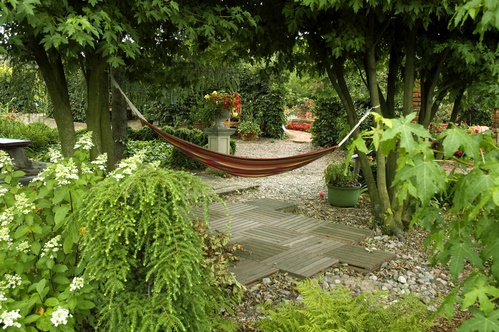
Basic Garden Design Principles
Any of the basics of good garden design apply to dry shady areas as well. You will want to think about how the area is going to be used, whether you prefer a casual or more formal style, and what your budget will be.
You will want to consider the size and shape of the plants and the visual lines they create. It can be helpful to start with the larger elements or focal points of your design, and then fill in the smaller details from there. Variety is necessary to create visual interest, but too many different colors, textures and plant species can create a chaotic look that lacks cohesive design. A common element such as a particular species of plant or a recurring color can help tie different areas together into an overall design.
For a successful dry shade garden design considering the water supply is vital. This is where consulting a landscape professional can be especially helpful. They will have ideas for making the best use of naturally available water. They may recommend grading an adjacent area to improve drainage, diverting extra water to a drier area. Including rain water harvesting in your garden design or changing irrigation methods may also be options.
The Importance of Plant Selection in Dry Shade Garden Design
One of the biggest decisions in garden design is choosing plants. You can get a garden design that is practical, unique and aesthetically pleasing, even in dry shade. It may limit your options a little more than having perfect growing conditions, but there are still plenty of plants to choose from. Skeptical? Check out this large list of plants for dry shade or this amazing list of native California drought tolerant plants. Many of these species grow just fine in shade. The growing popularity of xeriscaping means there are more plants available to homeowners and landscape professionals that tolerate dry conditions. Native plants will also grow better in dry shade since they are already adapted to local conditions.
One of the most useful garden design practices for dry shade is grouping together plants with similar water and nutrient requirements. Plants will not have to compete with each other to get what they need and will be more likely to thrive. Reducing the amount of turf lawn in a dry shady area or using grass varieties that require less water can also be helpful.
Soil Preparation is Key
When it comes time to make your new garden design a reality, soil preparation is especially important. The water and nutrient requirements of the new plants and condition of your existing soil will determine your exact course of action. In general, adding organic matter such as compost may be necessary. This will help your dry soil retain water and increase the nutrients available so your plants can thrive. Mulch also serves the same purpose and additionally deters weeds. Using these together will give your new plants the best chance to establish a good root system and promote growth.
While there are lot of things to consider in good garden design, the effort can save property owners money in the long run by reducing fertilizers, water, and maintenance. Get help with your landscape design and maintenance needs. Contact us today!
Planning and Maintaining a Shrubbery
Rock gardens and shrubberies might be the two best ways to add dimension to your landscaping efforts without breaking the bank or giving yourself more work down the road. Just like a rock garden, shrubberies are coming back in style!
Shrubberies are actually easy to maintain and take care of as well. Shrubs are technically woody plants that are far shorter than most trees yet have a network of stems that can really liven up a backyard or add a little privacy to your home’s front facade.
Flowering broom shrubs and rhododendrons even look beautiful in their own right and don’t need too much support from your annuals and perennials to enliven your home.
That said, a lush lawn never hurts, so if you need help in that department DK Landscaping is here to lend a helping hand. DK Landscaping can also help with irrigation.
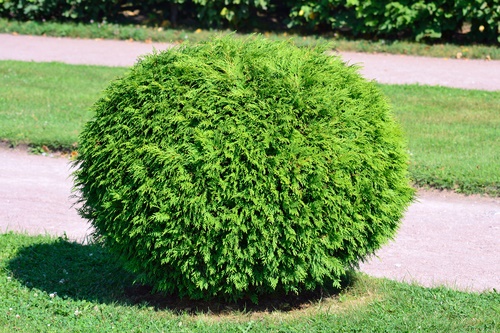
Planting a Shrubbery on Your Property
Shrubs are normally under ten feet in height and can either be evergreen or deciduous. This means that you can expect to find two classes of shrubs – one of which loses its leaves every autumn and then grows them back come springtime (deciduous) and the other kind of shrub retains its leaves on a year-round basis (evergreen).
- Leaving Room to Grow
Two other factors that you need to consider right off the bat is the maturity of the shrub that you’re interested in and, secondly, making sure that that shrub has enough room to grow without crowding out its neighbors.
The maturity and species of the shrub you go with will go a long way in determining how much space you need between each shrub and whether you’re letting in too much (or too little) sun to all of the shrubs you’ve planted as they go along in their growing cycle.
As an example, a shrub that’s much more bush-like and grows vertically like a arborvitae will require less sun, root space, and maintenance since it’s an evergreen and its stems don’t tend to blossom horizontally.
Bamboo palm or barberry, on the other hand, are actually quite low to the ground and need a little room to blossom out horizontally, so you’ll want to leave adequate space between each one and enough daylight so that the sun can reach down and nourish each individual shrub.
- Dig a Wide Hole
After you’ve picked out which shrub goes with the surrounding flowers and accessories in your yard, you need to transplant your shrubs and get them into the ground safely.
Digging a hole double the width of your shrub’s root ball is a good way to ensure that the roots get nourishment. After you’ve dug your hole then make sure to jostle the soil around slightly so that you’re not dealing with packed soil and your shrubs can continue to get nourishment.
- Transplanting the Shrub
When your hole is dug, carefully lower the shrub into place and put soil around the base. Then you’re going to want to spread out some mulch at the shrub’s base – just make sure that you go no more than six inches deep with your mulch.
- Regular Maintenance and Watering
Shrubs grow best in moist conditions that avoid too much saturation.
This means that regular watering from March to August in four-season climates should, in conjunction with some help from the sun and mother nature, provide most of the nourishment that your leucadendrons, rhododendrons, buckthorns and butterfly roses need to flourish.
An irrigation system is one of the best ways to prevent water waste and over-watering. For more on shrub maintenance and irrigation, contact DK Landscaping’s specialists today.


